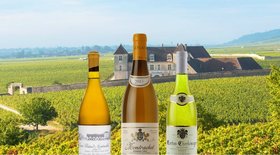My travels in Burgundy and 11 recommendations for your Burgundy Cellar in en Primeur 2020
Further reading
- Explore the Best Burgundy Wines and their Distinct Flavor Profiles.
- Here's the Ultimate List of French Wines to make your celebrations more memorable.
The Wine Connoisseur's Guide to Burgundy and the 2020 Futures are Must-Haves for your Portfolio
Greetings from sunny Singapore, where there is no winter and the temperature is an even 30° C (86° F) year-round, a far cry from what most of you are going through now. Since the pandemic started, I’m sure most of us yearn for travel, so badly in some cases that we have decided to grasp any opportunity to travel, regardless of how near or far.
As wine lovers in Singapore, we are so far removed from the action that we were waiting to jump at the first chance to leave the country and tour the vineyards. Before the pandemic, I’d go four to six times a year while balancing a full-time job as a pharmaceutical scientist and as a part-time wine educator. So, when Singapore announced a vaccination travel lane with Germany in September, I stalked down tickets on day one. With the addition of France to the lane, I added another destination to the itinerary in October. So off I went to Alsace, Champagne, Burgundy, Mosel, and Baden on a whirlwind tour of wine regions in December, when the weather was cold, but the receptions were warm.
What To Do in Burgundy

I arrived in Burgundy on a snowy morning, with icy roads all the way from Nancy. It took longer than expected to get to Dijon, but when I did, I was greeted with a town determined to celebrate Christmas no matter what. It was well-decorated, complete with a Christmas market and open shops, though it wasn’t that busy due to the sleet. Dijon itself is the northern gateway to the Côte-d'Or wine regions and a convenient pitstop for visiting the vineyards of Southern France. It is filled with Michelin-caliber restaurants and world-class hotels, not to mention the recommended mustard tasting (not available at the time due to Covid-19). Some recommended attractions include the Brasserie des Beaux Arts in the Musee des Beaux Arts and L’Essentiel. Classic Burgundian fare.
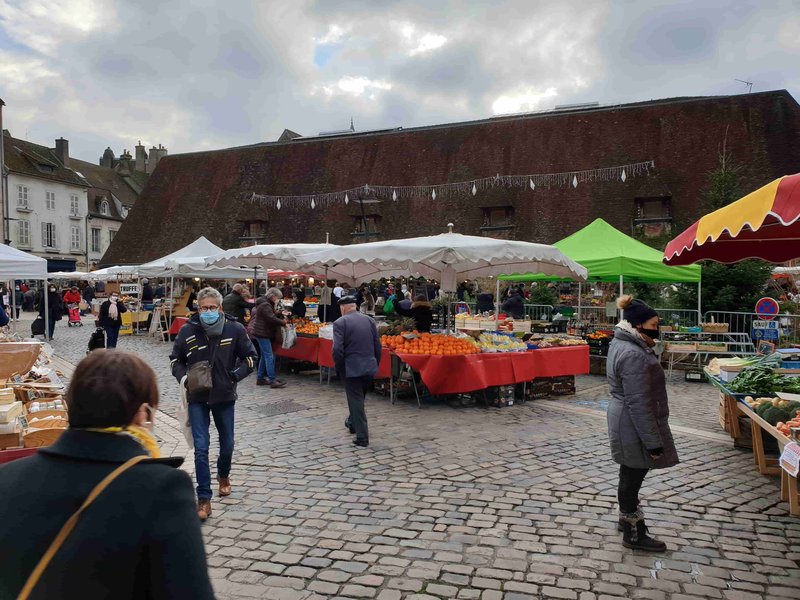
The issue that most wine lovers have with visiting Burgundy is that many domaines, especially some of the legendary names are closed to visitors, even those within the wine trade. The reasons are twofold. Firstly, most Burgundy domaines are family-owned, and their production is small and in high demand globally. Every bottle they serve is one less they have for the thirsty masses. Secondly, because they tend to be small (average ten hectares), they don’t have the budget to hire public relations staff. Hence if you do visit, you will often receive a guided tour from a family member, who would likely much prefer to spend their time focusing on their craft, than playing tour guide.
However, if you know where to look, there are still plenty of worthwhile estates to visit. Oenotourism is slowly catching on in Burgundy. While it is not at the level of Napa Valley or Bordeaux, more domaines are opening their doors and welcoming the public. In the Côte de Nuits, I recommend visiting Domaine Trapet in Gevrey Chambertin, where I had lunch. They offer a succulent beef bourguignon pairing with grand cru wines at a reasonable price. Domaine Trapet’s dining room has tasteful decor and a cozy atmosphere, making for an archetypal Burgundian lunch experience. I tried 2014 Chambertin, 2010 Chapelle Chambertin, and 1996 Latricieres Chambertin. The estate has multiple vintages ready to drink, and the wines were, of course, fabulous.
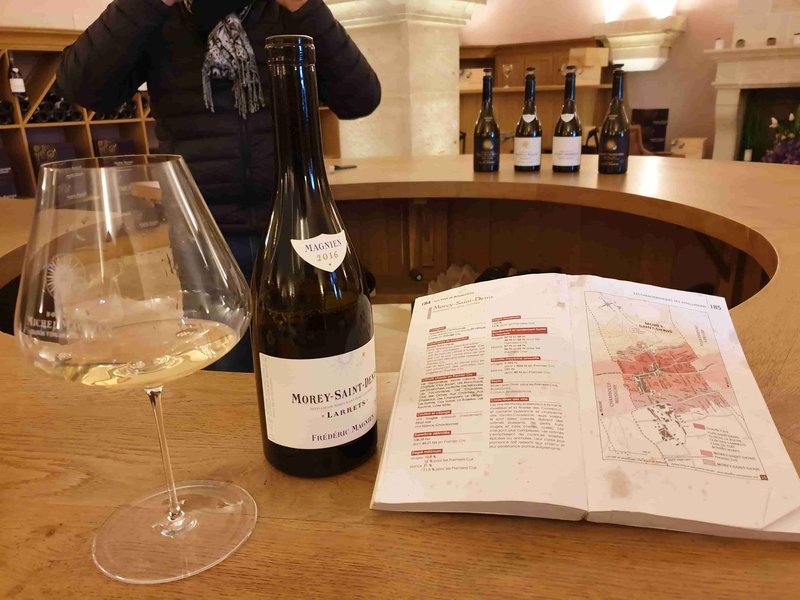
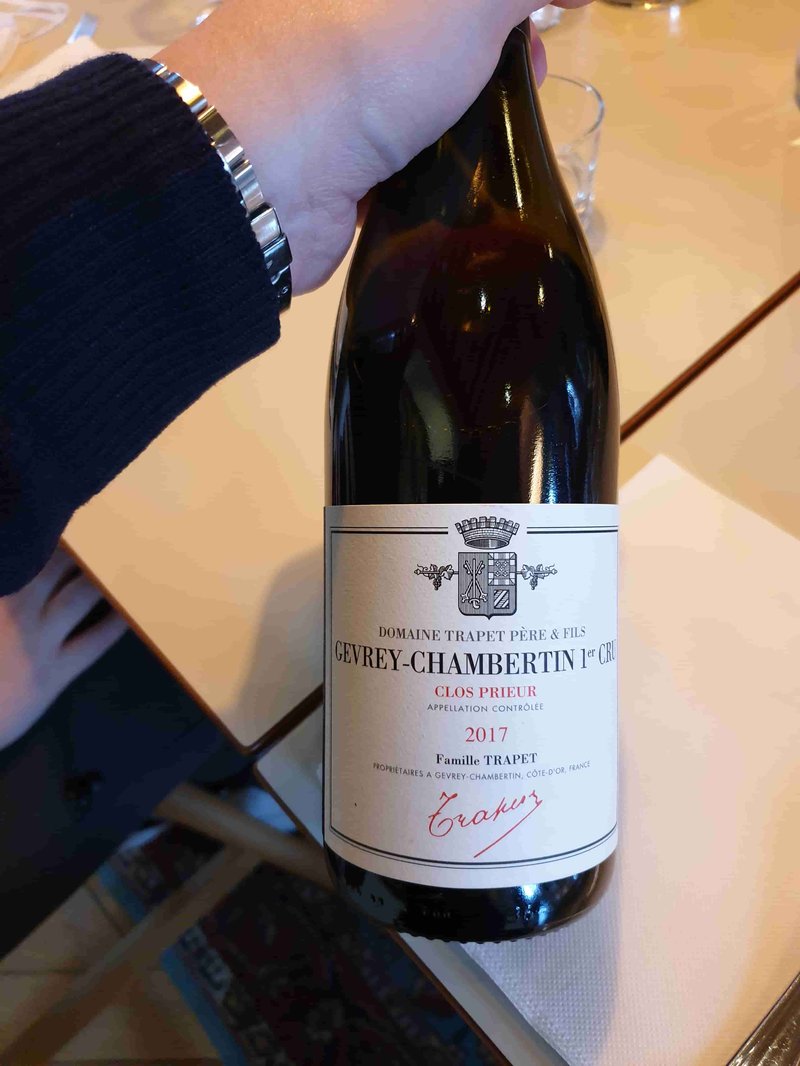
For those interested in seeing and learning more about wine production, I recommend Domaine Michel Magnien in the neighbouring village of Morey-St-Denis.
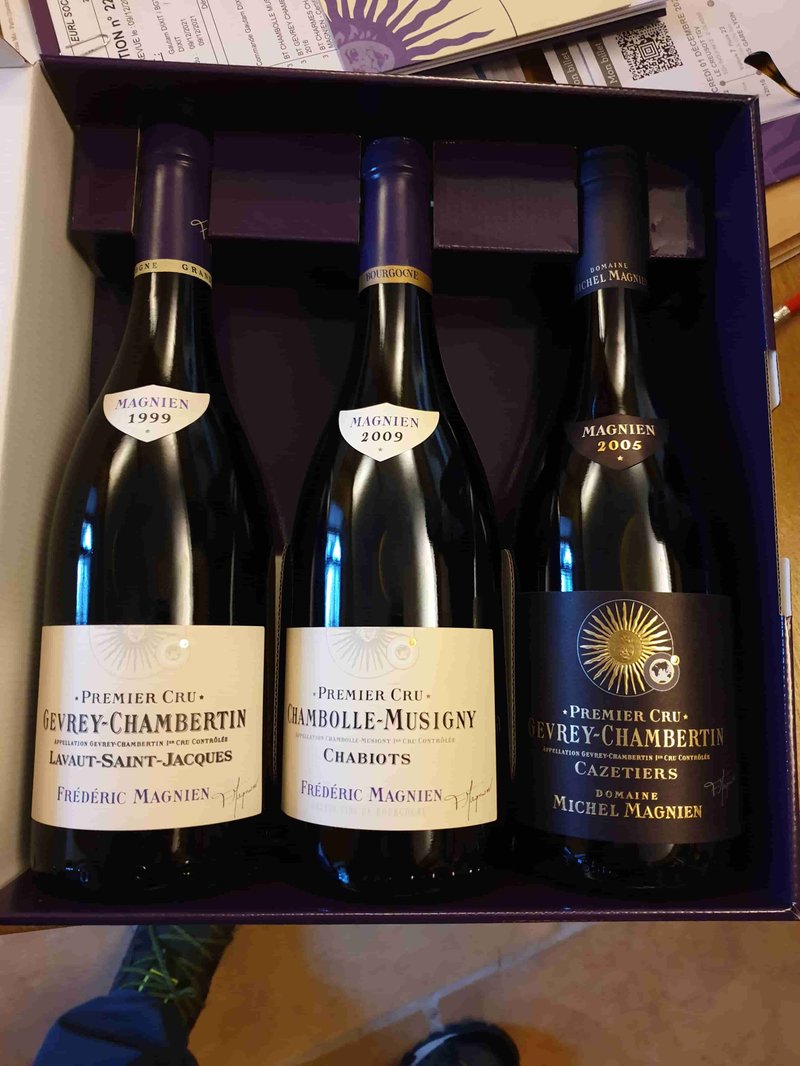
While the négociants in Beaune cannot wait to show you their swanky new cellars, Michel Magnien blends innovative with the traditional. It is a rather quaint operation, owning just 18 hectares and operating both as a domaine and a négociants (Frederic Magnien label). When I visited, they were running a bottling and labelling line while the 2021 wines were slumbering in barrels of all sizes (228L, 500L, and even some 2200L Stockinger barrels) and materials (concrete eggs and clay amphoras.) The experimentation with different sized barrels and materials stems from the idea that oxygen permeation depends on the vessel’s shape. The shape changes the rate and type of reactions during maturation. It also influences the convection currents in the wine, which allows for better circulation and mixing between different wine components, reportedly making a more harmonious wine.
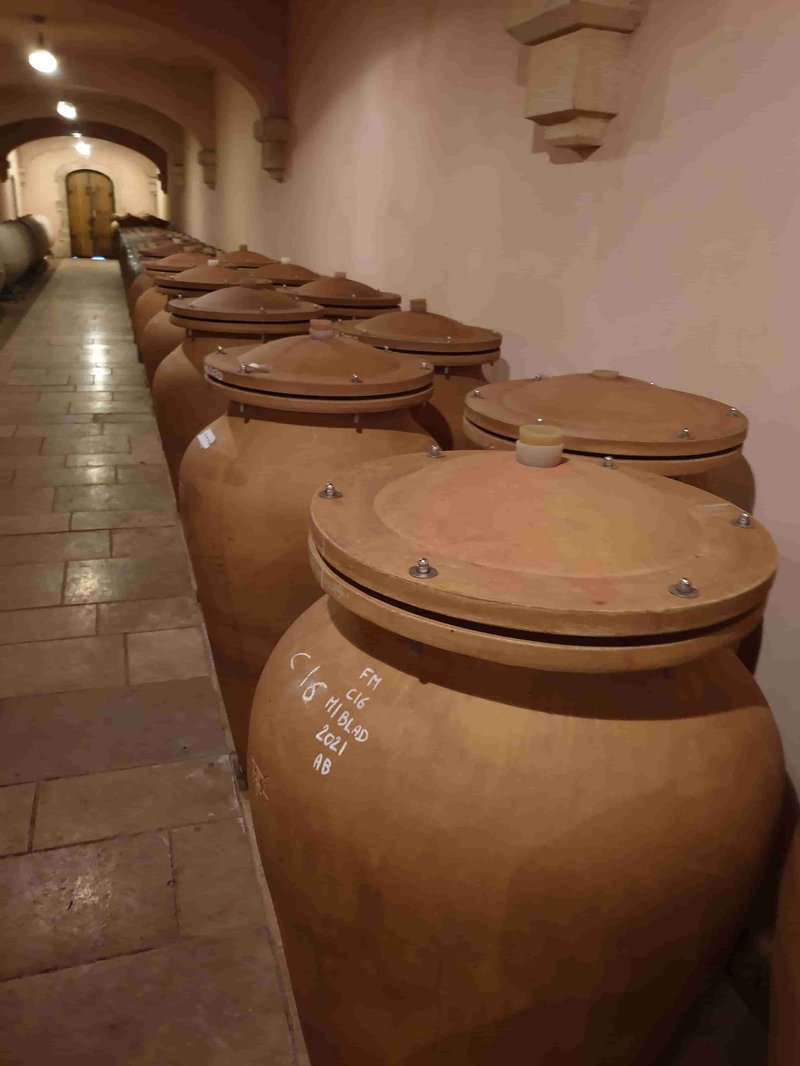
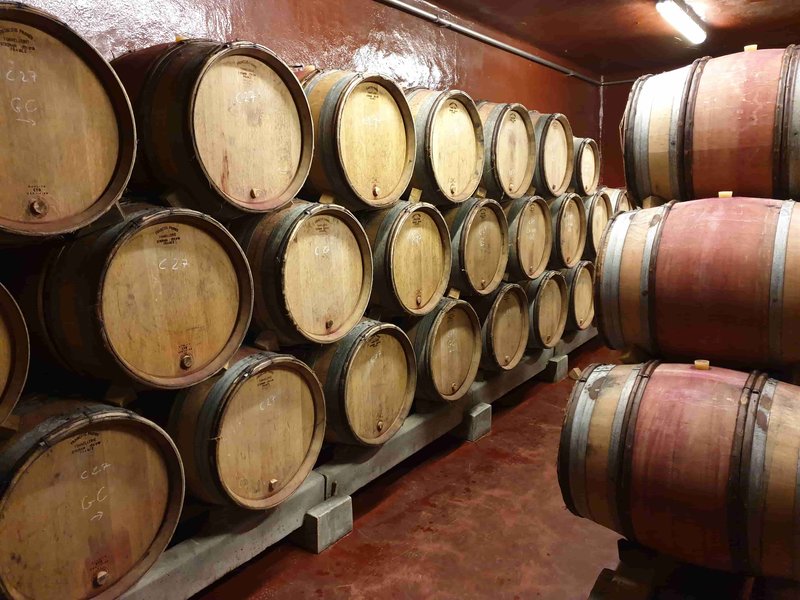
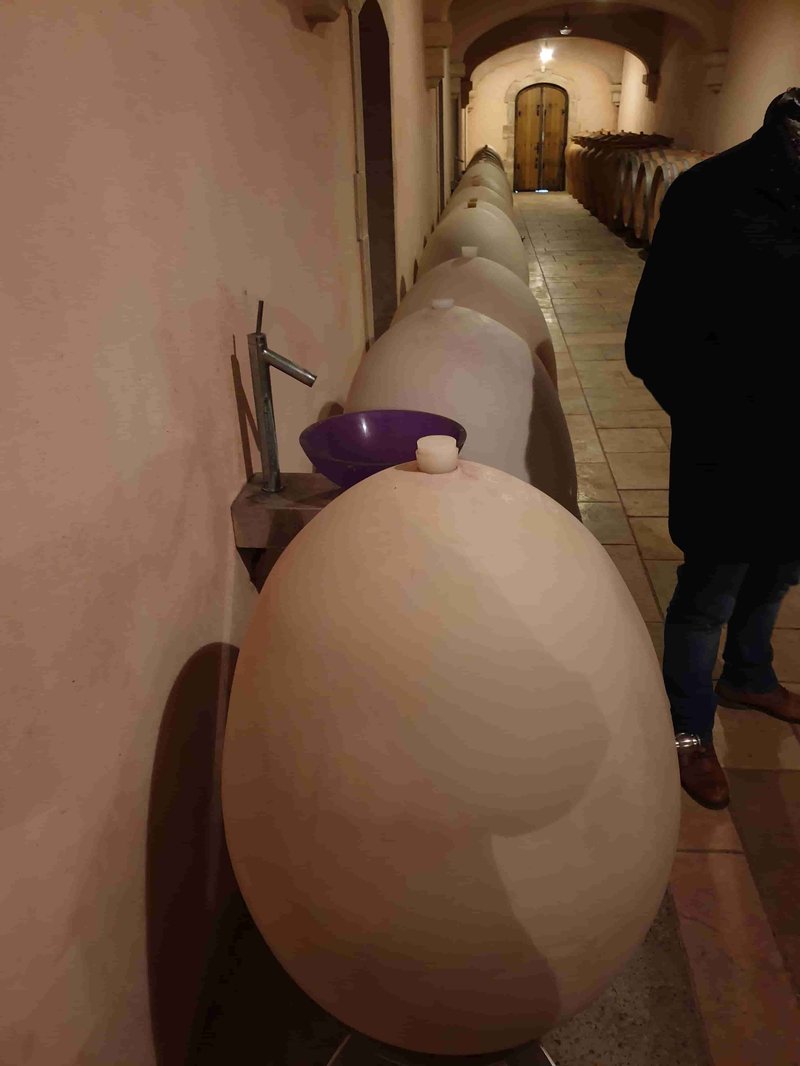
I tasted the pure amphora aged Gevrey Chambertin 1er Cru Le Petite Chapelle 2016 and was struck by its purity of fruit and expressiveness. Despite having no oak influence, it tasted like a Gevrey Chambertin 1er Cru. Also, if you are lucky enough to visit the vineyard and taste some wines you really like, Michel Magnien will ship any wines you purchase to your home address. I recommend the Charmes Chambertin, the Morey St Denis 1er Cru Millandes and the Chambolle Musigny 1er Cru Les Borniques. Other worthwhile domaines open for visitation in the Côte de Nuits include Domaine Mongeard Mugneret, Domaine Armelle, and Bernard Rion.
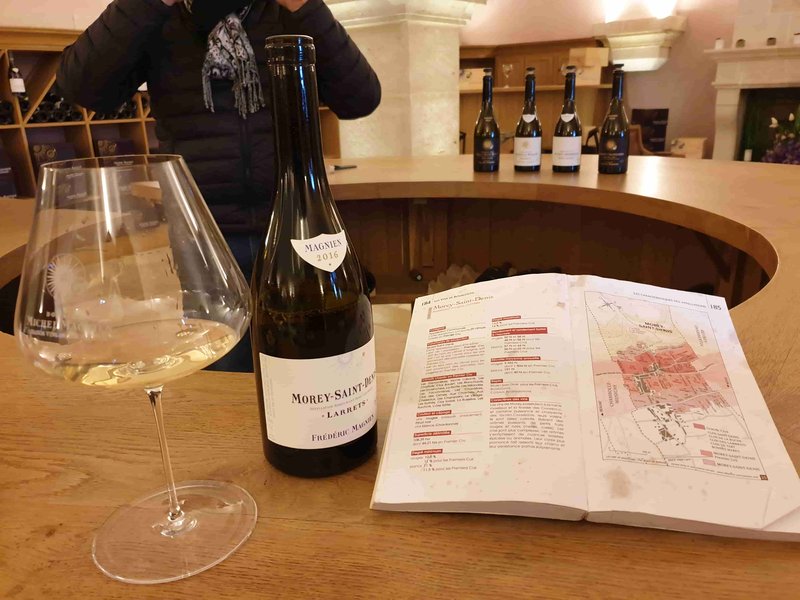
Many tend to forget that Burgundy is still a négociant-dominated wine region, given the fame and prices of its top domaines. Négociants buy grapes from small growers, some as small as two rows of grapes in a single vineyard, and use their facilities to make the wine. They have economies of scale, and a quality-focused négociant can produce excellent wines with the right terroir. In fact, many own parts of top premier and grand cru vineyards and produce wines that rival the best domaines. As they are much larger, négociant tend to have tasting rooms, and some offer cellar tours. The best part about visiting a négociant is the ability to compare wines of different villages, something not many small domaine producers cannot offer. Invariably, the best ones are based in Beaune, such as Joseph Drouhin, Louis Jadot, Louis Latour and Bouchard Pere et Fils. As with other producers, make appointments before visiting.
A Quick Trip to Beaune

Other than the Côte de Nuits, no trip to Burgundy is complete without a stop in Beaune, the wine capital of Burgundy, and home of the famous Maison Dieu, which holds the Hospices de Beaune auctions. There’s no shortage of traditional hotels in the city centre in heritage buildings, nor luxury hotels such as the Hotel le Cep, the Hostellerie Cedre, and Spa Beaune. It also has many tourist baiting wine shops and good ones at that. My favourite place, though, is the Atheneum, a sprawling bookstore selling just about every tome on French wine in French and plenty in English. The map section, which features detailed maps on every famous grand cru and village, is heaven for wine nerds. Don’t forget to try the regional specialty: the escargot!
Evaluating the Burgundy En Primeur 2020
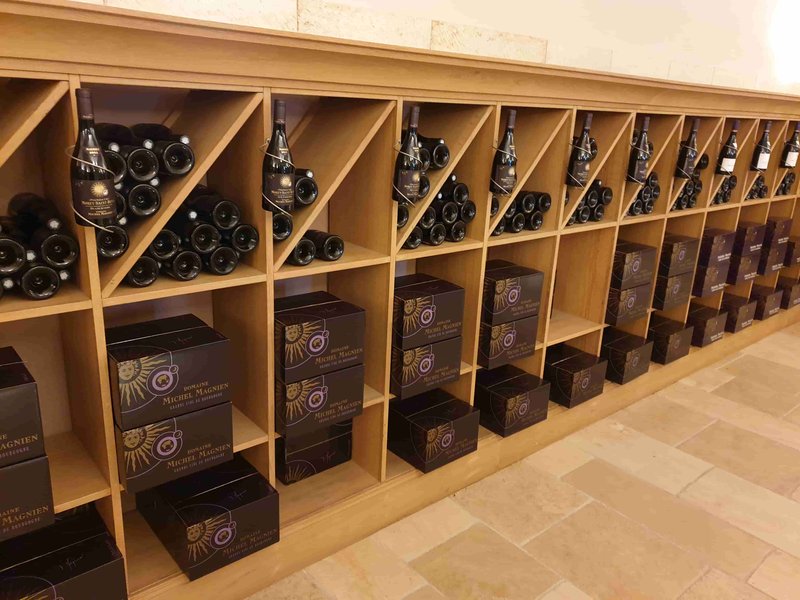
Burgundy as a region is in focus at the beginning of each year, as producers tend to release their wines for the Burgundy en primeur campaign. This warm, dry vintage showcased early budburst and a very early harvest, with many growers picking in late August. Importantly, work in the vineyards continued throughout the lockdown, so quality is generally high. There were no significant heat spikes in summer and cool nights ensured that the fruit’s kept their acidity and freshness. This year is a golden opportunity to buy the whites, which have drawn rave reviews and stand up well to the great vintages of 2014 and 2017. The reds are slightly more complicated and variable as sugar and phenolic ripeness as the pinot noirs proceeded at different paces. This heterogeneity led to some wines being lighter like the 2017s, while some growers chose to pick later and ended up with a riper and less acidic wine with higher alcohol content. Buyers should be careful to factor all of this into consideration when choosing which wines of this vintage to purchase.
The investment case for Burgundy has always been strong. While the top names are probably now out of reach to all but the deepest of pockets, here are some producers that I can heartily recommend and make great wines at a reasonable price.
Here are the 11 most investment-worthy wines for each village:
- Gevrey Chambertin: Domaine Rossignol-Trapet
- Morey St. Denis: Domaine Des Lambrays
- Chambolle Musigny: Domaine Felletig
- Vosne Romanee: Domaine Coquard-Loison-Fleurot
- Nuits St. Georges: Domaine Henri Gouges
- Aloxe Corton: Domaine Tollot Beaut
- Pommard: Domaine Comte Armand
- Volnay: Domaine de Montille
- Meursault: Domaine Latour Giraud
- Puligny Montrachet: Domaine Francois Carillon
- Chassagne Montrachet: Domaine Bernard Moreau
Add the top wines from the négociant Drouhin, Bouchard, Louis Jadot, and Faiveley, and you have a Burgundy collection that will not destroy your bank account yet provide enjoyment in years to come.


